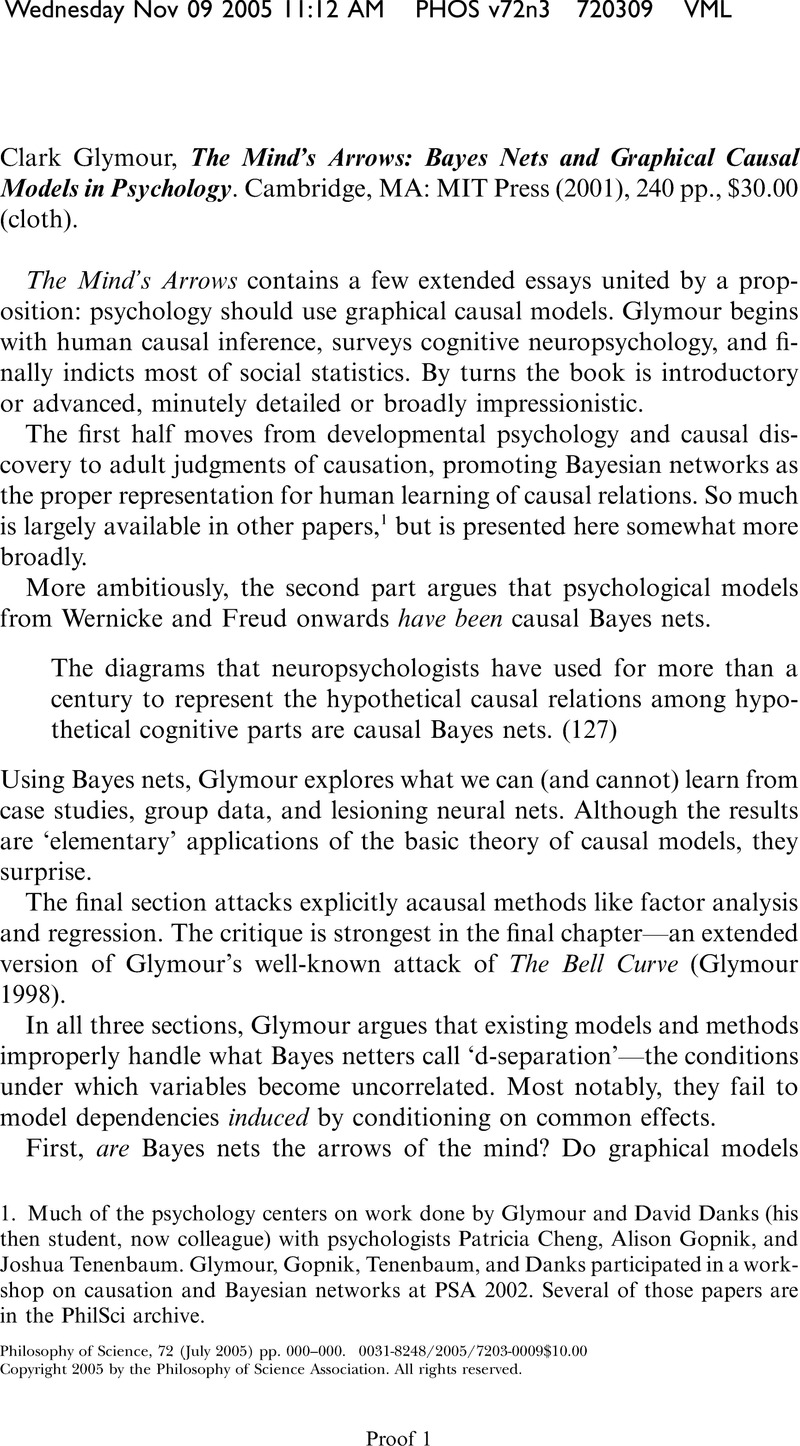No CrossRef data available.
Article contents
Clark Glymour, The Mind's Arrows: Bayes Nets and Graphical Causal Models in Psychology. Cambridge, MA: MIT Press (2001), 240 pp., $30.00 (cloth).
Published online by Cambridge University Press: 01 January 2022
Abstract
An abstract is not available for this content so a preview has been provided. Please use the Get access link above for information on how to access this content.

- Type
- Book Review
- Information
- Copyright
- Copyright © The Philosophy of Science Association
References
Ahn, Woo-kyoung, and Bailenson, Jeremy (1996), “Causal Attribution as a Search for Underlying Mechanisms: An Explanation of the Conjunction Fallacy and the Discounting Principle”, Causal Attribution as a Search for Underlying Mechanisms: An Explanation of the Conjunction Fallacy and the Discounting Principle 31:82–123.Google ScholarPubMed
Ahn, Woo-kyoung, et al. (1995), “The Role of Covariation versus Mechanism Information in Causal Attribution”, The Role of Covariation versus Mechanism Information in Causal Attribution 54:299–352.Google ScholarPubMed
Baker, Andrew G., et al. (1993), “Selective Associations and Causality Judgments: The Presence of a Strong Causal Factor May Reduce Judgments of a Weaker One”, Selective Associations and Causality Judgments: The Presence of a Strong Causal Factor May Reduce Judgments of a Weaker One 19:414–432.Google Scholar
Cheng, Patricia W. (1997). “From Covariation to Causation: A Causal Power Theory”, Psychological Review 104:367–405.CrossRefGoogle Scholar
Glymour, Clark (1998), “What Went Wrong? Reflections on Science by Observation and the Bell Curve”, What Went Wrong? Reflections on Science by Observation and the Bell Curve 65:1–32.Google Scholar
Glymour, Clark, and Cheng, Patricia (1998), “Causal Mechanism and Probability: A Normative Approach”, in Oaksford, Mike and Chater, Nick (eds.), Rational Models of Cognition. Oxford: Oxford University Press, 295–313.Google Scholar
Hausman, Daniel M., and Woodward, James (2004), “Modularity and the Causal Markov Condition: A Restatement”, Modularity and the Causal Markov Condition: A Restatement 55:147–161.Google Scholar
Herrnstein, Richard J., and Murray, Charles (1994), The Bell Curve: Intelligence and Class Structure in American Life. New York: Free Press.Google Scholar
Kelley, Harold H. (1973), “The Processes of Causal Attribution”, The Processes of Causal Attribution 28:107–128.Google Scholar
Tenenbaum, Joshua B., and Griffiths, Thomas L. (2001), “Structure Learning in Human Causal Induction”, in Leen, Todd K., Dietterich, Thomas G., and Tresp, Volker (eds.), Advances in Neural Information Processing Systems 13. Cambridge, MA: MIT Press, 59–65.Google Scholar




